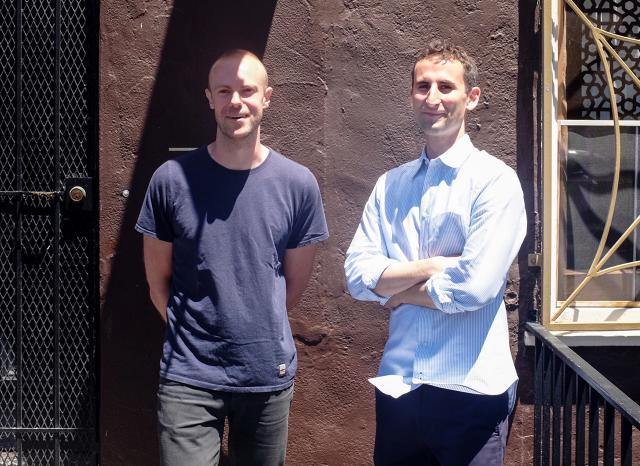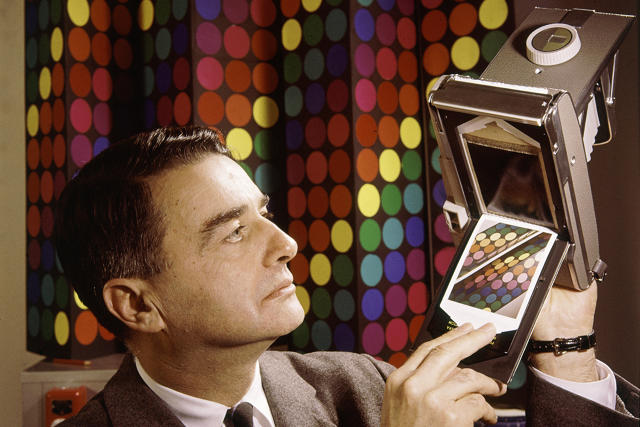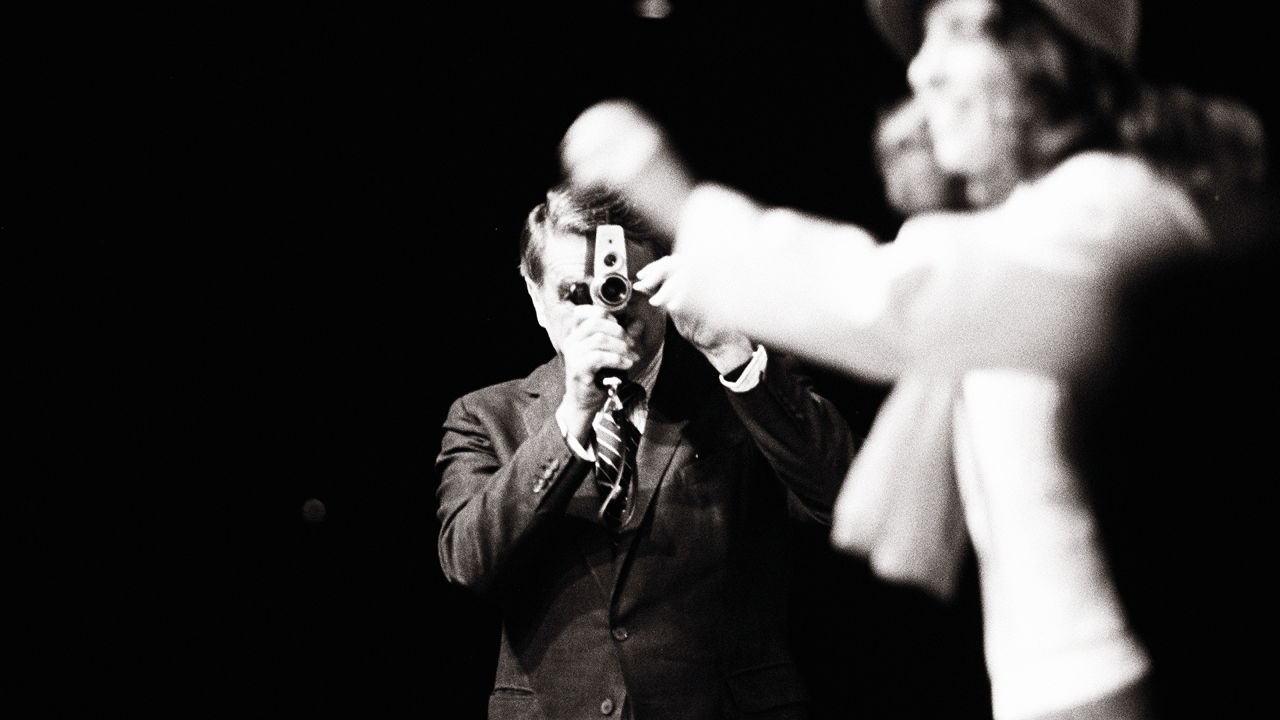Meet The San Francisco Startup Creating A Future For Polaroid
When I grab tea with Frederick Blackford at a little corner bar in San Francisco’s Hayes Valley neighborhood, the man behind the counter overhears us talking about Polaroid. And it just puts a smile on his face. Unprompted, he explains to us that the brand that made photography instant is not a relic, but alive, well, and cool.
The tea guy’s instinctive enthusiasm for Polaroid photography as an idea—despite the fact that the company stopped making cameras and film years ago after a long, painful decline—is widespread. But here’s what he doesn’t know: A few yards from his establishment, in basement offices below an organic massage and skin-care spa, Blackford, his cofounder Tommy Stadlen, and a team of 10 have been hard at work building a next-generation Polaroid camera.
This being 2016, their camera is not a piece of hardware in the mold of the SX-70, OneStep, and other once-familiar Polaroids of the past. Instead, it’s an iPhone app called Polaroid Swing. The name alludes in part to the Swinger, another best-selling Polaroid camera released 51 years ago this month. But mostly, it references the fact that the images the app lets you shoot—and share in the app as well as via Facebook and Twitter—actually record one second of time as a 60-frame sequence. Swing your phone left and right (or swipe the picture) and you can move back and forth. “The idea is to capture the arc of a moment,” says Stadlen.
Until now, the only Polaroid pictures that ever moved were movies made with 1977’s Polavision system, which bombed. But even though it mostly involved still images, the Polaroid experience was always interactive and intimate. The goal behind Swing’s mini-stories is to use modern technology to recapture some of pleasure of pushing a button, watching an image develop before you, sharing it, and savoring the memory it captures. Which is why the one-second sequences you create with Swing are called . . . Polaroids.
All this is easier to experience than explain, so here—try swiping this embedded Polaroid, and the others scattered throughout this story:
Blackford’s and Stadlen’s company is legally known as Grasscrown, and will brand itself as Swing, but the name they really care about—the one that appears below the app’s icon on your home screen—is Polaroid. They have the right to use the term thanks to a deal with the modern Polaroid company, based in suburban Minneapolis, which believes enough in Swing that it’s an investor—the first time it’s taken an equity stake in a licensee. “They’ve been incredibly supportive,” says Stadlen. “It took a while to get them to trust what we’re doing.”
Also among Swing’s investors is Twitter cofounder Biz Stone, who found this new incarnation of Polaroid photography so compelling that he signed on as chairman. The startup’s staff, though tiny, includes alums from Apple, Google, and Facebook; Cole Rise, a photographer whose early contributions to Instagram were so important that its creators named a filter after him, heads up design as artist in residence.
The Land Legacy
Swing’s two creators go way, way back: They met at age eight, when they lived on the same London street. Stadlen grew up to be a management consultant, journalist (he cowrote a book with a former CEO of BP), and political advisor who counts the 2008 Obama campaign among his work. Blackford, meanwhile, founded a marketing agency that helped athletes and sports leagues connect with tech companies and other firms.
In 2013, Blackford explains, “Polaroid came on my radar as a potential client to work with.” But after delving into the company’s history, he became so smitten with its legacy—and especially founder Edwin Land’s accomplishments as a technologist and entrepreneur as well as his cultural influence—that his mind turned to possibilities much bigger than marketing partnerships.
“I realized there was a really interesting opportunity to bring together Polaroid with a new group of engineers, designers, investors, and backers,” he says. “People who could really reconnect that original vision of Polaroid with innovation.”

Blackford started to formulate the idea that became the Swing app and began negotiations with the modern Polaroid to use its brand—a discussion that ended up taking nearly a year. Working with Stadlen, he set up shop in New York, in part because of the original, Boston-based Polaroid’s ties to the East Coast. But as it turned out, “everybody we recruited came from Apple and several other big Silicon Valley companies,” he says. “Our center of gravity moved west.”
The fledging enterpreneurs relocated to San Francisco and met up with Biz Stone, who started out by offering advice and then joined as chairman, giving the company an instant dose of tech-startup credibility. “Biz brought with him investors as well as talent,” says Blackford. “But he’s also heavily involved with his own product and brand expertise.”
Swing’s new take on the Polaroid experience does not involve trying to reconstruct the company’s glory days in any literal sense. Polaroid in its original form was a distinctly New Englandy-y Boston institution, not a California upstart. Neither Blackford nor Stadlen is an engineer, let alone a scary-brilliant scientific polymath like Land. (Long before getting into instant photography, he dropped out of Harvard and created the first synthetic polarizer—a breakthrough that was eventually utilized by liquid-crystal displays such as the one in every iPhone.)
Land’s Polaroid was responsible for some of the most remarkable consumer products of its era; Swing is just a nifty iPhone app. And yet it’s not tough to connect the dots from the company’s past to the current smartphone-crazy age that makes an app like Swing possible.
After all, when Land was talking about his long-range vision for Polaroid’s technology in 1970, he mocked up a camera-of-the-future that was a thin, black, pocket-sized rectangle. A couple of years later, he unveiled the groundbreaking SX-70 camera—which, though not remotely wallet-sized, was compact for a Polaroid and far simpler to use than any model before it. “My fantasy is that it’ll be as widely used as the telephone,” he declared.
In other words, Land came tantalizingly close to predicting a day when people around the world would end up shooting photos in vast quantities using pocket-sized rectangles that doubled as telephones. It’s just that by the time technologies existed that could make his pocket-rectangle camera vision a reality, Polaroid was in no position to take advantage of them.
Don’t Blame Digital
Almost everybody who tries to explain Polaroid’s decline reflexively pins the blame on the rise digital photography. But the company started floundering years before film became an anachronism. Its products peaked as a consumer phenomenon in the late 1970s; after that, they faced stiff competition from slick 35 mm point-and-shoot cameras and one-hour photo labs that offered almost-instant gratification.
Land stepped down as Polaroid’s CEO in 1980, at the age of 70. He left the company altogether two years later to devote his full attention to research into color theory, a pursuit that kept him occupied until his death in 1991. Without its founding genius, Polaroid lost its spark of innovation: It cranked out cameras that improved on what had come before in only incremental ways, and plastered its name on commodity products such as conventional film and floppy disks.
When digital photography did come along and change everything, Polaroid, despite offering some early consumer digital cameras itself, was too diminished to put up much of a fight. In this century, it’s gone bankrupt (twice), discontinued the production of cameras (2006) and film (2008), and changed ownership repeatedly.
Eventually, it stabilized. But the company that was once a technology giant became a far smaller licensor of intellectual property. A variety of companies pay for the right to use its moniker on everything from digital cameras with built-in printers (utilizing tech originally developed at Polaroid) to HDTVs to action cameras to $60 smartphones you can buy at Toys “R” Us.
A Polaroid app for smartphones could have been just another licensing deal—something designed to cash in on residual fondness for the brand and instant photography. (Actually, such a licensed app already exists.) But Blackford and Stadlen have gone out of their way to avoid the sort of cues that would make Swing feel like an exercise in nostalgia. It doesn’t use Polaroid’s famous rainbow stripes as a design element, and the moments it captures are portrait-shaped, rather than having the nearly square ratio of Polaroids in their most iconic form. (Those nearly square Polaroids are still a universal visual shorthand for “snapshot,” as on the cover of Taylor Swift’s 1989 album.)
In fact, the app’s explicit allusions to Polaroid are so subtle that they amount to Easter eggs. It utilitizes News Gothic, the typeface that Polaroid design guru Paul Giambarba chose for the company’s logo in 1957. And its four filters are named after Polaroid’s creator (Land), the town where he had the brainstorm that led to instant photography (Santa Fe, New Mexico), a Polaroid enthusiast who happened to be a legendary photographer (Ansel), and a Polaroid product (Polavision).
Rather than striving to be overtly Polaroid-esque, Swing’s creators spent most of their time trying to build something that was compelling on its own terms. “We feel that we have 10 people on the team, but we’d also had the benefit of this amazing group of 200 beta testers,” Stadlen says. “Cole has helped us curate this group of artists and creatives. They have very much co-created the new Polaroid medium with us. We asked them, ‘How long do you think a memory lasts?'”
There’s also real computer science in the app, which uses interpolation technology devised by former Apple engineers to keep each moving picture crisp and fluid. (The look has less in common with Apple’s theoretically similar Live Photos—in which motion is an afterthought, not the whole point—than you might guess.) “We experimented with different frame rates and really tried to push the iPhone camera to its limits,” says Stadlen.
The inclusion of only four filters was a willful choice, one that makes the app feel less like an Instagram wannabe than it might otherwise have. “To begin with, we really wanted to keep this simple and make it about the new medium,” says Blackford. “There’s enough cognitive overload to begin with. We have a few filters that help make the Polaroid pictures look beautiful, but this was not an exercise in going back to filter apps and trying to replicate that.”
For Swing’s creators, the fact that the app is debuting on an Apple device has special resonance. Steve Jobs idolized Edwin Land and was fond of saying that the company he counded sat “at the intersection of the liberal arts and technology,” a declaration presumably influenced by Land’s description of photography as “the intersection of science and art.” But an Android version of the app is in the works. And though the company is cagey about the details, it’s also actively working on ideas for giving its one-second Polaroids some sort of physical form.
“We believe very strongly that this is a medium that can exist in a digital world, but also in the physical world, eventually,” says Stadlen. “And we just want to get Polaroid pictures into the culture, in whatever way is best.” (Physical Polaroids could end up being part of the app’s business model; it’s free and, for now, ad-free.)
Like all the other startups that stick their wares in the App Store, Swing won’t be viable unless it finds a critical mass of users and a sustainable way to monetize them. By leveraging the Polaroid name, it’s given itself the additional challenge of living up to a storied brand and maybe even helping to bolster its fortunes. Still, the mere fact that its creators take that resposibility seriously is enough to warm the heart of a Polaroid devotee. “It’ll never come back to what it once was,” says my friend Phil Baker, a veteran technologist who began his career at Polaroid in its glory days. (He even shares a patent with Edwin Land.) “But it’s exciting and interesting to see someone try to resurrect a little of the excitement that once was. These guys really have the passion.”

It would be presumptuous to hazard any guesses about what Land himself would think about what Blackford and Stadlen have created. The man was even known to grumble about some of the products his own company sold—he much preferred the pricey leather-and-metal SX-70 to its more plasticky, populist offspring, such as the rainbow-striped OneStep. But the way they turned their reverence for his work into a company and a product honors his memory. And if there’s one thing Land deserves, it’s to be remembered.
“Some people don’t know who he is,” says Stadlen. “And we think everyone should.”
Related Video: The Reasons Why Even A Startup Needs H.R.
Fast Company , Read Full Story
(19)














